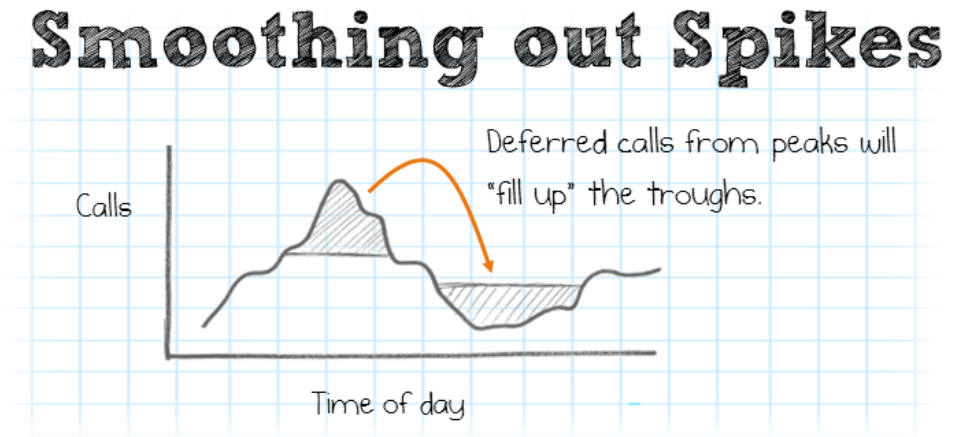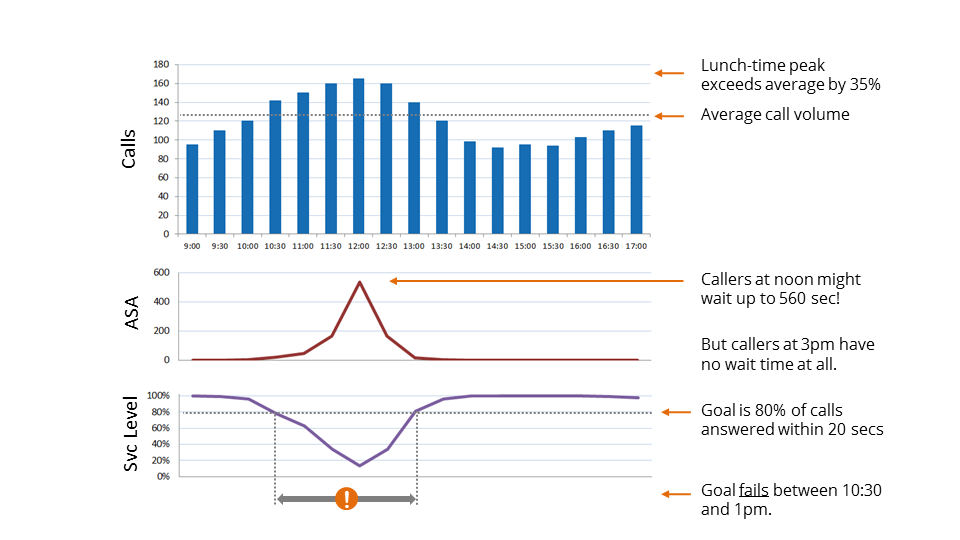Monday: It’s the start of a new week and everyone is back to reality, trying to check everything off their “To-Do” lists. The problem? Mondays are notorious for call volume spikes and high agent absenteeism: a deadly duo. Whether it’s falling ill or just wanting to extend the weekend, being understaffed on Monday’s is commonplace in the contact center world. This, coupled with high call volume, can create a major meltdown for any call center.
However, there is a rather simple solution that can help smooth out those dreaded spikes in call volume, while making life easier for those agents who showed up to work.
Add Call-Backs to Your Strategy
You’re probably thinking, “Tell me, what is this mysterious solution you speak of?” Well, it’s call-backs, of course.
By adding call-backs to your contact center strategy, spikes in call volume can be a thing of the past, even on the most understaffed days.
How does it work you ask? Here’s a visual representation of how call-backs can help eliminate spikes in call volume:

When agents can’t keep up with calls, the Average Speed to Answer (ASA) grows. That drives up the abandonment rate, as callers get tired of waiting on hold. Long wait times also lead to frustrated customers who then take out their anger on agents, raising average handle time and lowering agent morale. Your service level agreements can suffer, too.
So if you’re experiencing a spike in call volume, you can use call-backs to defer those calls to a later time when call volume is expected drop. The basic effect is “smoothing out” the call traffic.
Customers Can Schedule a Future Call-Back Too
It’s important to make the distinction between regular (or “ASAP”) call-backs and scheduled call-backs. Traditionally, with call-backs, the customer’s place in line is held, and they are called when their turn arrives. Another name for this is “virtual queuing” because the caller is waiting in the queue via a virtual place holder.
This approach yields the advantages of decreased abandonment, shorter handle times, and lower telco costs, but it does not get us the traffic reshaping advantage we want. That’s because just replacing queue time with virtual queue time doesn’t change the burden on the call center. To do that you need scheduled call-backs, whereby customers are offered carefully selected time slots in the future for their call-back.
Smooth Out Call Volumes
Take a look at the charts below. The call volume between 10:00 AM -1:00 PM is significantly higher than any other time. Therefore, the excess call volume can be spread across a time frame where there is little to no wait time; in this case, it’s 2:00 PM – 4:30 PM. This helps to achieve the desired “smoothed out” call volume and gives agents and the contact center peace of mind.


Don’t let Mondays stress you out. Instead, let call-backs make the most out of your agents, improve ASA (Average Speed to Answer), and eliminate hold time for callers.
